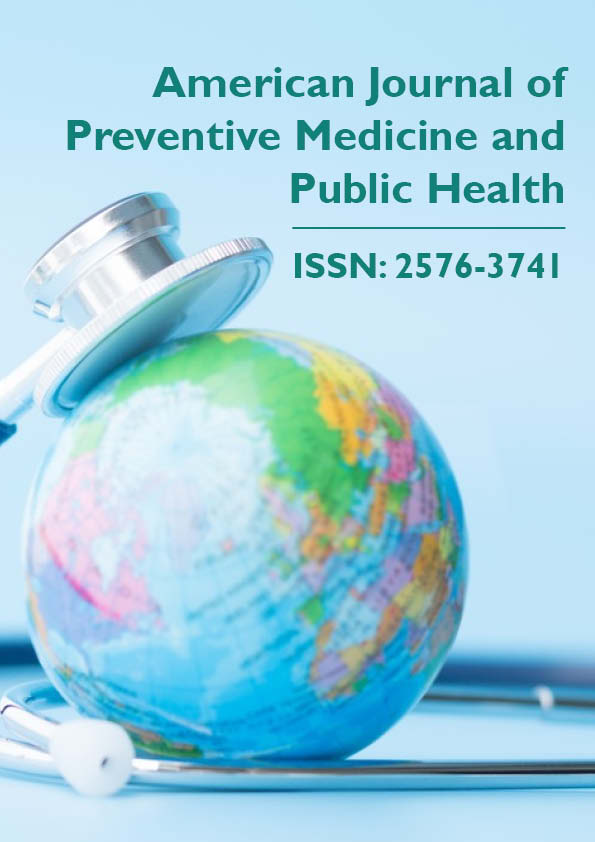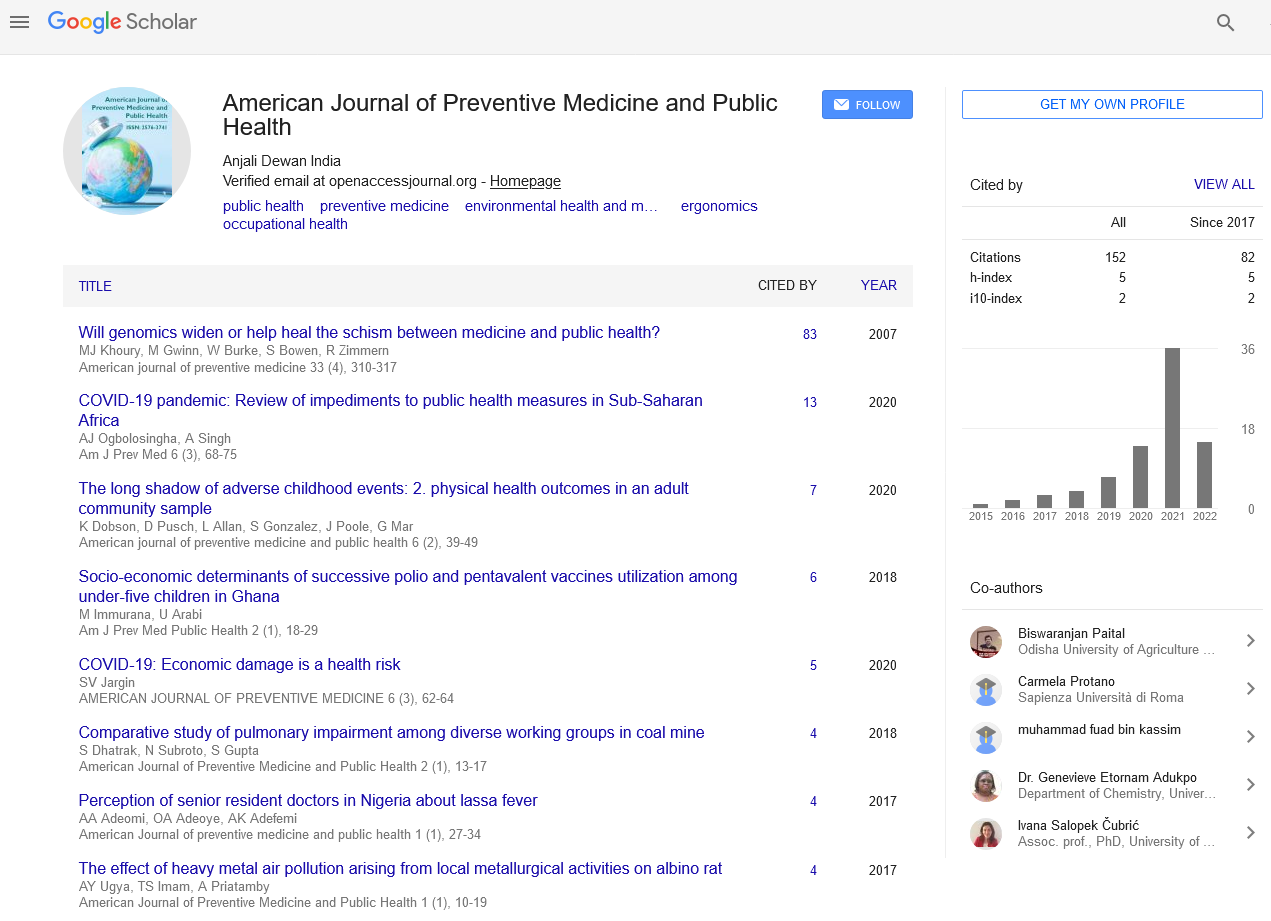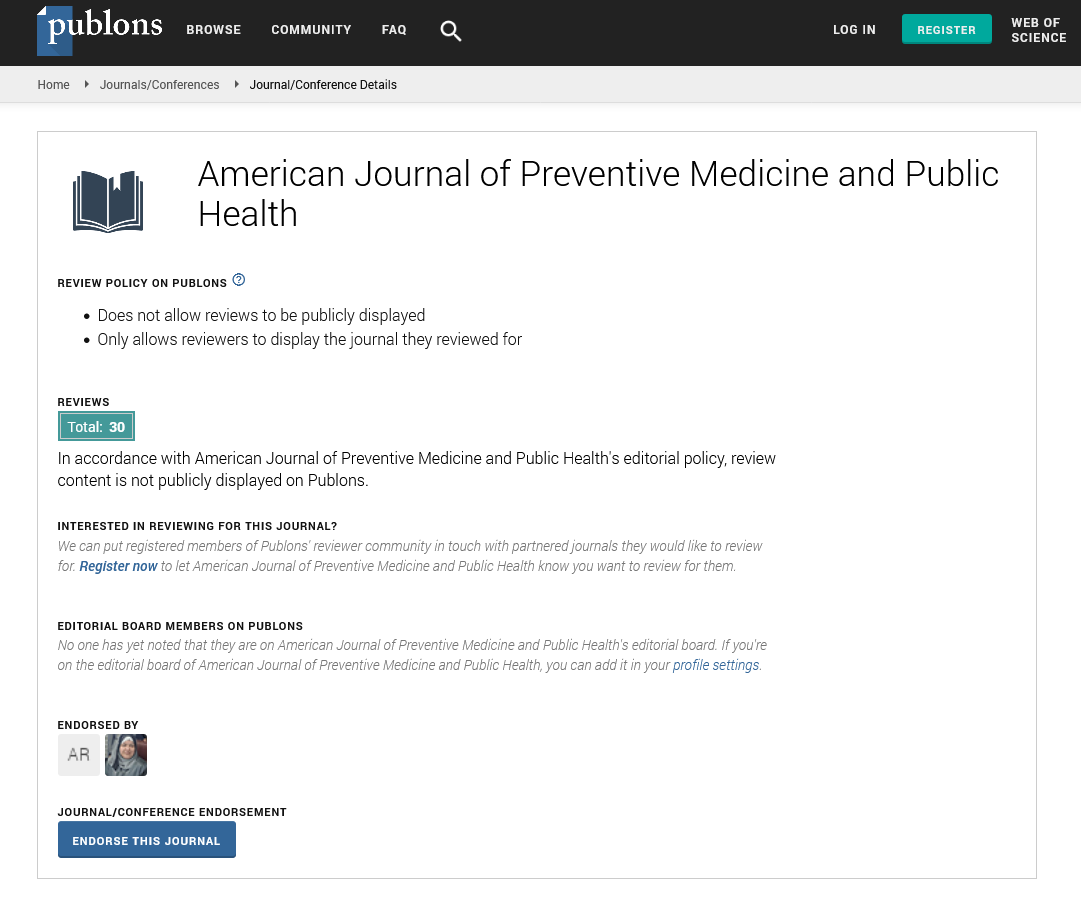Commentary - American Journal of Preventive Medicine and Public Health (2022)
Clinical Outcomes and Risk Factors for COVID-19 among Norwegian Migrants
Adriana Oliva-Arocas*Adriana Oliva-Arocas, Department for Public Health and Primary Care, University of Bergen, Bergen, Norway, Email: arocasolivaadriana25@gmail.com
Received: 10-Nov-2022, Manuscript No. AJPMPH-22-83034; Editor assigned: 14-Nov-2022, Pre QC No. AJPMPH-22-83034(PQ); Reviewed: 30-Nov-2022, QC No. AJPMPH-22-83034; Revised: 05-Dec-2022, Manuscript No. AJPMPH-22-83034(R); Published: 12-Dec-2022
Description
Immigrants had a higher risk of COVID-19 infection, hospitalization, and death globally than natives of host countries. Three main mechanisms that explain this have been identified. Differences in exposure, underlying disease (susceptibility), and care. Understanding the contribution of the above mechanisms is essential to reduce inequalities in COVID-19 or future pandemics [1].
Many migrants live in cramped housing conditions that are socio-economically disadvantageous and hold high-impact jobs. However, some studies suggest that such factors only partially explain the disproportionate burden of COVID-19 on immigrants. Aging populations and deteriorating health conditions increase the risk of severe COVID-19 disease. Immigrants arriving in high-income countries are often young and healthy, but their health appears to deteriorate at a relatively young age. They have a higher prevalence of disease and may be more susceptible to severe forms of COVID-19 [2]. However, previous studies have shown that higher COVID-19-related hospitalization or mortality among immigrants is not explained by underlying medical risks. Genetic susceptibility to COVID-19 and severe disease progression in immigrant groups has also been suggested, but so far lacks sufficient empirical support. Poor language skills and unfamiliarity with the health care system in host countries are major barriers to immigrants’ access to available information and care. A Norwegian qualitative study shows that both immigrants and service providers experienced these challenges. Precautionary recommendations can lead to unintended inequalities when immigrants have difficulty understanding recommended control measures. In addition, barriers to getting medical care when needed can worsen the prognosis. Such obstacles in the COVID-19 pandemic have not yet been fully evaluated. A Swedish study assessed the role of language barriers and lack of institutional recognition in explaining COVID-19 mortality among immigrants by examining immigrants who worked in Sweden. A study design that compares rates of COVID-19 among immigrants married to another immigrant elucidates some of the mechanisms that may be associated with higher risk, revealing exposure, potential risk, and barrier. Marriages between immigrants and indigenous peoples are both agents and mediators of integration. For immigrants, marriage to a native is related to proficiency in the host country’s language, society and its systems (including the health care system), and cultural familiarity, and is important for building social networks. Language and knowledge of the health system is therefore a lower barrier than immigrants living with another immigrant. Aboriginals married to immigrants share most of the risks with their spouses, but the underlying risks may still be different [3].
This article aims to examine how overexposure to COVID-19 among migrants is related to differences in exposure, vulnerability, or care. Demographic factors (age, gender, education, household income, occupation, cramped living conditions) and medical risks [4-5].
Her overexposure to COVID-19 in immigration was not explained by differences in susceptibility or exposures associated with social deprivation indicators. Our results could not fully explain the difference in infection rates among immigrants and Norwegian-borns, but they demonstrated the importance of barriers to care. Similar rates of COVID-19 in mixed couples demonstrate the importance of social, cultural, and structural factors not considered in this study, including during pandemics, in reducing health inequalities. Efforts must be protracted to identify and alter such determinants of health.
References
- Shpilsky GF, Takahashi H, Aristarkhova A, Weil M, Ng N, Nelson KJ, et al. Bacillus Calmette-Guerin’s beneficial impact on glucose metabolism: Evidence for broad based applications. IScience 2021;24:103150.
[Crossref] [Google Scholar] [PubMed]
- Takahashi H, Kühtreiber WM, Keefe RC, Lee AH, Aristarkhova A, Dias HF, et al. BCG vaccinations drive epigenetic changes to the human T cell receptor: Restored expression in type 1 diabetes. Sci Adv 2022;8: eabq7240.
[Crossref] [Google Scholar] [PubMed]
- Ten Doesschate, T, van der Vaart TW, Debisarun PA, Taks E, Moorlag SJCFM, Paternotte N, et al. Bacillus Calmette-Guerin vaccine to reduce healthcare worker absenteeism in COVID-19 pandemic: A randomized controlled trial. Clin Microbiol Infect 2022;28: 1278-1285.
[Crossref] [Google Scholar] [PubMed]
- Upton CM, Wijk RCV, Mockeliunas R, Simonsson USH, McHarry K, Hoogen GVD, et al. Safety and efficacy of BCG re-vaccination in relation to COVID-19 morbidity in healthcare workers: A double-blind, randomised, controlled, phase 3 trial. EClinicalMedicine 2022;48: 101414.
[Crossref] [Google Scholar] [PubMed]
- Lauring, AS, Tenforde MW, Chappell JD, Gaglani M, Ginde AA, McNeal T, et al. Clinical severity of, and effectiveness of mRNA vaccines against, covid-19 from omicron, delta, and alpha SARS-CoV-2 variants in the United States: Prospective observational study. BMJ 2022;376: e069761.
[Google Scholar] [PubMed]
Copyright: © 2022 The Authors. This is an open access article under the terms of the Creative Commons Attribution Non Commercial Share Alike 4.0 (https://creativecommons.org/licenses/by-nc-sa/4.0/). This is an open access article distributed under the terms of the Creative Commons Attribution License, which permits unrestricted use, distribution, and reproduction in any medium, provided the original work is properly cited.







